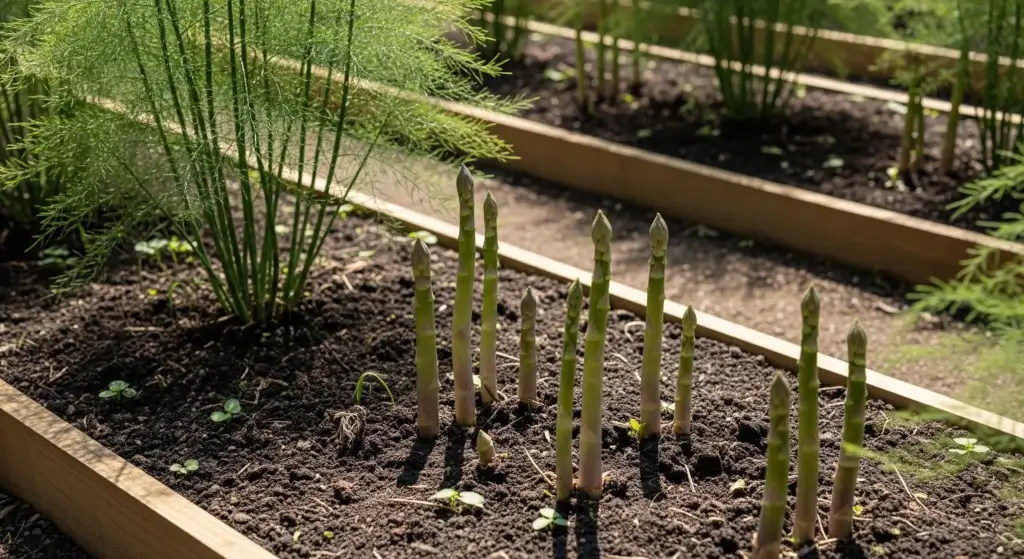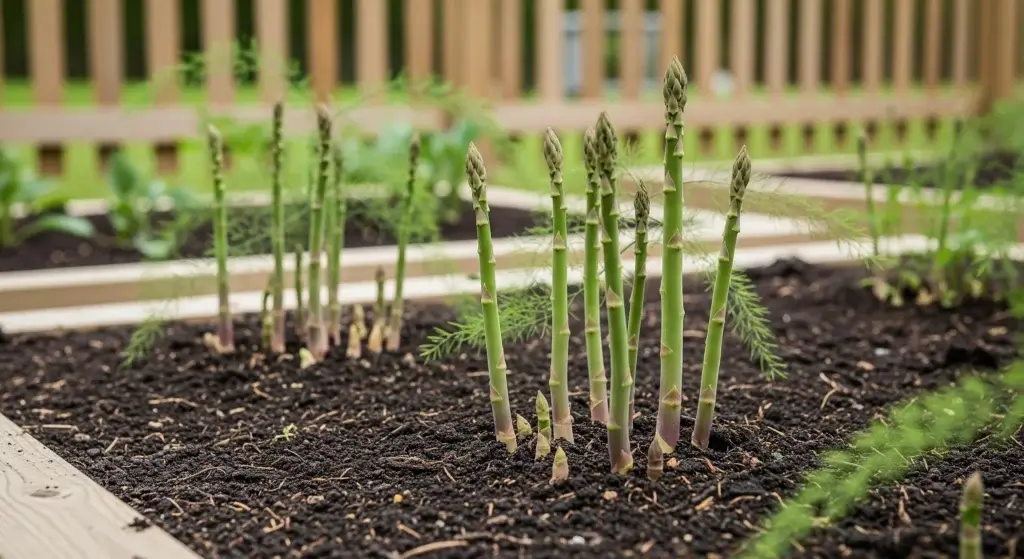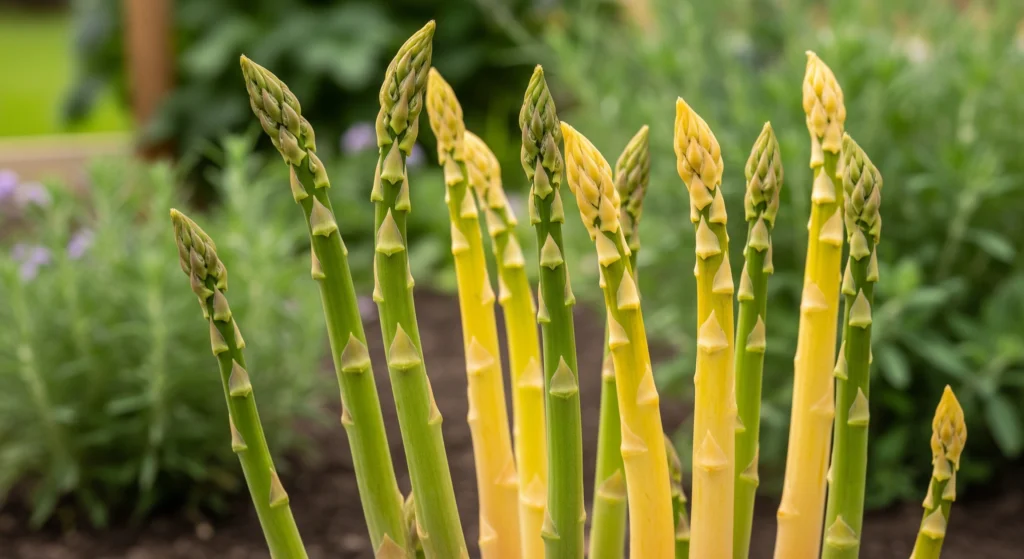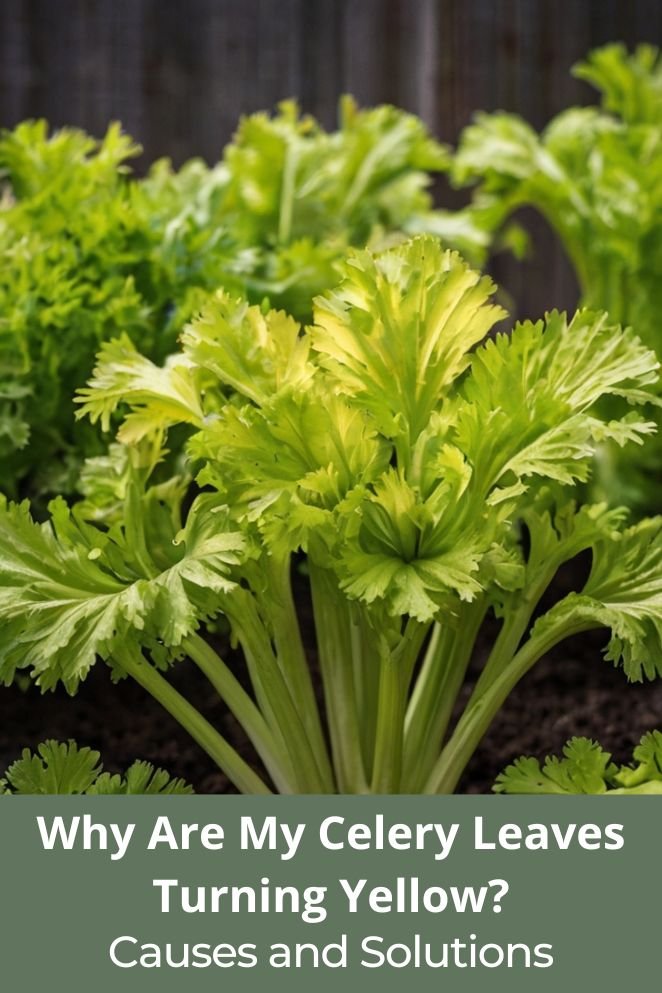
Got yellow leaves on your celery? Don’t freak—your plant’s just throwing a leafy tantrum.
It could be too much water, not enough food, or some tiny pest party.
The fix? Totally doable.
We’ll break down what’s bugging your celery and how to get it back to fresh, crunchy glory.
Think of this as plant rehab—no whispering required.
Common Causes of Yellowing Celery Leaves
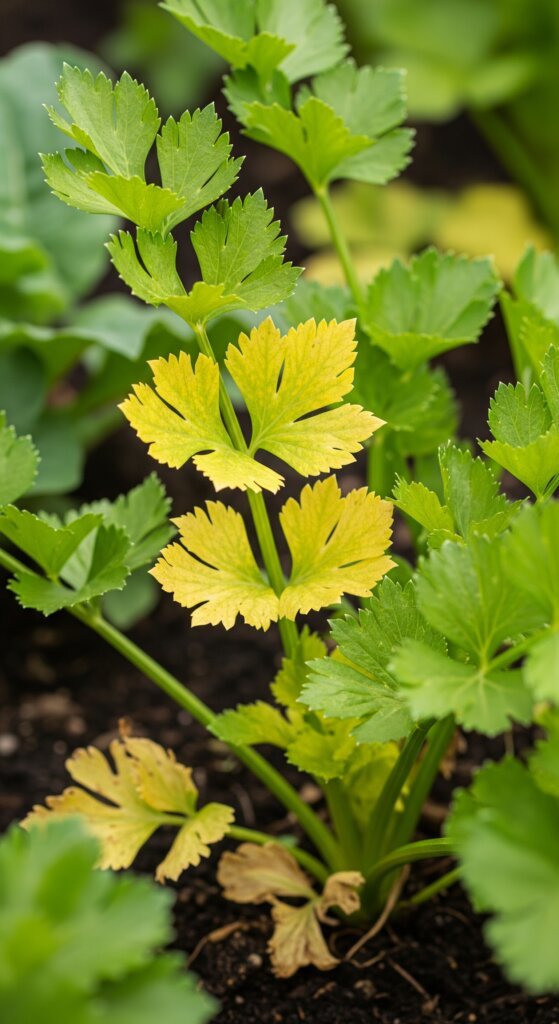
Yellowing celery leaves? Your plant’s not being dramatic—it’s trying to tell you something.
Let’s decode that leafy distress call and get your celery back to its crisp, green glory. Here are the usual suspects:
1. Nutrient deficiencies
Celery’s a bit high-maintenance when it comes to nutrients.
If it’s not getting its favorite minerals, it shows.
- Nitrogen deficiency: Old leaves turn yellow first, and the plant looks like it’s stuck in slow-mo. Classic hangry vibes.
- Potassium deficiency: Leaves look yellow and floppy, kind of like bad salad.
- Magnesium deficiency: You’ll see yellowing between the veins, like the leaf’s trying to become a highlighter.
Fix it: Test your soil (DIY kits or garden centers can help). Then feed your celery the right stuff—fertilizers with the nutrients it’s missing. Think of it as a spa day with multivitamins.
2. Watering issues
Celery’s got strong opinions about hydration. And like most of us, it doesn’t like extremes.
- Overwatering: Roots sit in soggy soil, start rotting, and leaves go yellow like a bad fake tan.
- Underwatering: The plant gets crispy brown tips and dry vibes—basically a celery burnout.
Fix it: Check the soil before watering. It should feel damp, not soggy or bone dry. Use pots with drainage holes or improve your garden bed so water doesn’t throw a pool party underground.
3. Pest infestations
Bugs love celery too—and not in the cute, salad-loving way.
- Aphids: These little sap-suckers leave your celery yellow, curled, and weirdly shaped. It’s like plant Botox gone wrong.
- Wireworms: They chew up the roots, and your plant starts yellowing from the bottom like it’s giving up slowly.
Fix it: Hit aphids with insecticidal soap or invite ladybugs to your garden (they snack on aphids like popcorn). For wireworms, yank out affected plants, clean up the soil, and maybe try planting celery elsewhere next time.
4. Diseases
Some plant diseases come in like a plot twist and mess things up fast.
- Fusarium yellows: A fungus that makes leaves yellow and growth stunted. No bueno.
- Cercospora leaf spot: Starts with yellow spots, then turns into gross streaks.
- Celery mosaic virus: Fancy name, not-so-fancy look—mottled yellow patterns and twisty, messed-up leaves.
Fix it: Sadly, there’s no plant hospital. Yank and trash the infected ones (don’t compost!), rotate your crops like a pro, and next season, pick disease-resistant celery varieties—yes, they exist.

Preventive Measures
Preventing those sad yellow leaves is a lot like self-care: it’s about staying ahead of the drama.
Here’s your celery’s “glow-up” checklist, plant-parent style:
1. Regular monitoring
Peek at your plants often—like you’re low-key stalking them (in a loving way).
- Look for anything off: yellow leaves, weird spots, pests throwing a party.
- Catching issues early is like catching a zit before it becomes a full-blown breakout.
Pro tip: Grab your morning coffee and give your plants a quick once-over. It’s relaxing and way more productive than doom-scrolling.
2. Proper spacing
Celery doesn’t like being crammed—give it room to breathe.
- Tight spacing = poor airflow = sweaty, sad plants that invite fungi to move in.
- Think of it like social distancing, but for your garden.
Rule of thumb: Leave enough space between stalks for air to circulate like a Beyoncé fan blowing in slow motion.
3. Weed control
Weeds aren’t just annoying—they’re total moochers.
- They steal water, hog nutrients, and harbor pests like they’re running a bug Airbnb.
- Plus, they make your garden look like it’s going through a rough patch.
Fix: Pull weeds regularly or use mulch to block them out like an ex’s number.
4. Sanitation
Would you cook with a dirty pan? Exactly.
- Dirty tools spread diseases faster than spoilers on Twitter.
- Wipe down your shears, spades, and gloves after use—especially if you’ve handled sick plants.
Pro tip: Use a 1:10 bleach-water mix or good ol’ rubbing alcohol. It’s cheap insurance for your garden.
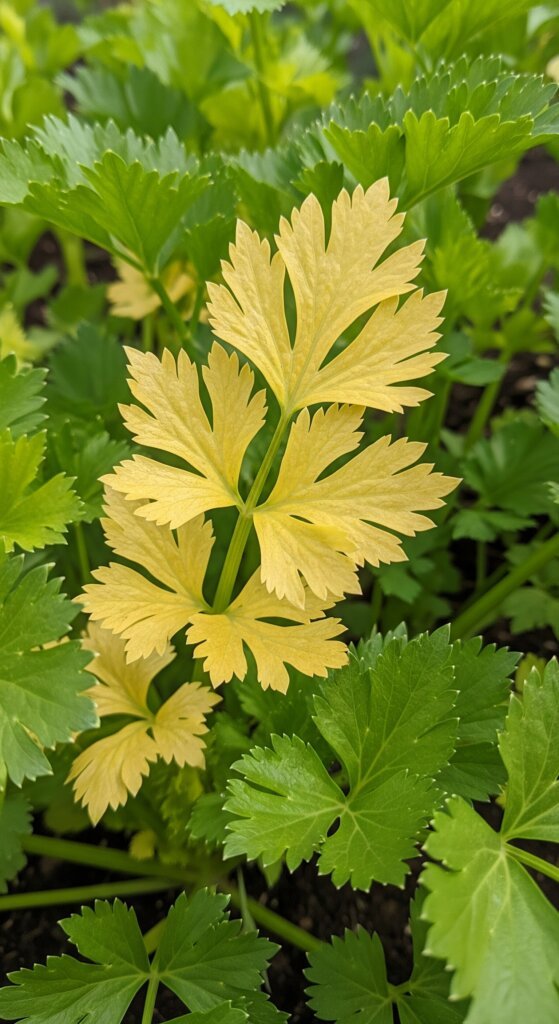
Final Word on Yellow Celery Drama
If your celery’s looking more like it needs therapy than a salad bowl, don’t sweat it—those yellow leaves are just its way of crying out for help.
Whether it’s missing some key nutrients, drowning in too much love (aka water), getting munched on by pests, or fighting off a plant plague, there’s always a fix.
Figure out what’s bugging your celery, give it the TLC it needs, and boom—crisp, green stalks are back on the menu.
Stay consistent, stay observant, and your garden will reward you like a leafy little gratitude machine.

